“There’s been some pretty significant glimmers of hope — only to have our hopes dashed again,” Peconic Baykeeper’s executive director, Pete Topping, said at the start of a panel discussion the group hosted in December on this year's scallop season and prospects for the future.
Outdoors
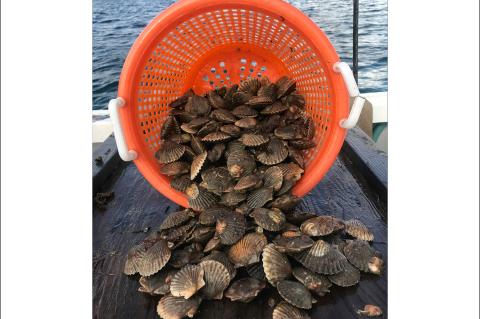 On the Water: A Scallop Conundrum
On the Water: A Scallop ConundrumDespite a few precious bay scallops being dredged from Lake Montauk, the season has been a total bust just about everywhere on the East End since it opened in early November.
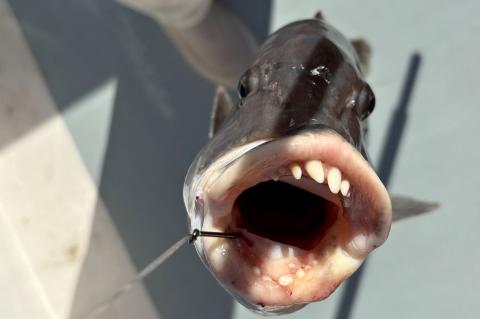 On the Water: I’m Thankful
On the Water: I’m ThankfulThere is one tradition of Thanksgiving that I miss even a decade later. My good friend Wayne Clinch of Montauk used to organize consecutive fishing charters on the Friday and Saturday after Turkey Day.
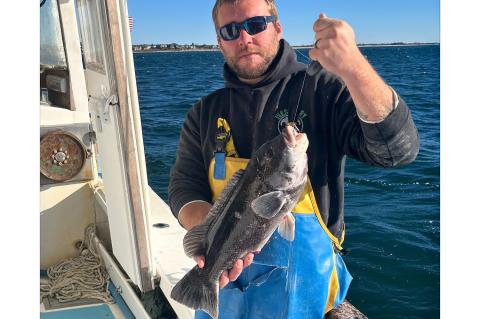 On the Water: It’s Not Over Yet
On the Water: It’s Not Over YetFor a vast majority of anglers, the fishing season has come to an end, as persistent cold winds out of the north have taken a firm hold. But the bass fishing has been great off the ocean beaches and the blackfish action has been excellent.
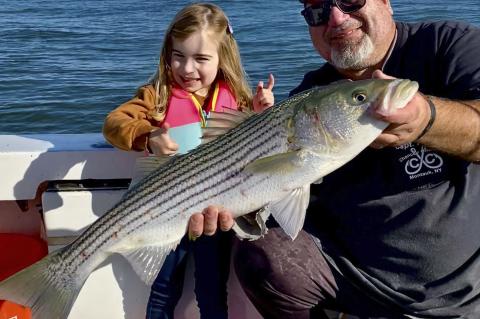 On the Water: Her Season Is Over
On the Water: Her Season Is OverThe Star's fishing columnist has taken his boat out of the water for the season, but on the fishing scene, the action remains solid, especially for striped bass and blackfish.
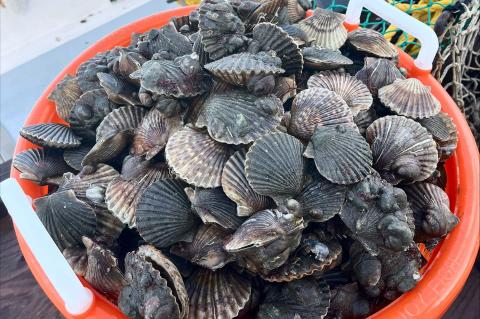 On the Water: Old Habits
On the Water: Old HabitsI can most certainly relate to the phrase “old habits are hard to break,” especially as it pertains to bay scallops. No matter how much I read year after year about the dire predictions for the five-month scallop season, which opened at daybreak on Monday morning in state waters, I still make plans to be on my Rock Water with six iron dredges in tow on opening day.
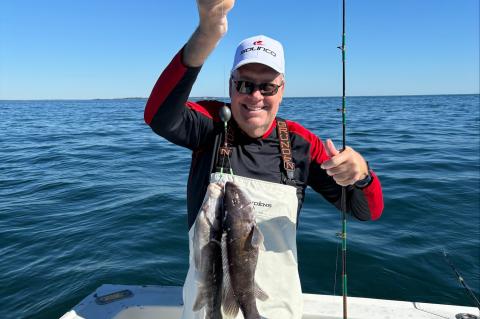 On the Water: A Blackfish Bonanza
On the Water: A Blackfish BonanzaI was recently joined on board by Al Daniels, he of the family that has resided here on the East End for 13 generations. Daniels has known all things fishing for nearly eight decades. My wife, Terie, was also ready to catch her dinner. After a ride of more than an hour to the north side of Gull Island, the outgoing tide was still running strong when we arrived. When the blackfish homed in on our baits, they were hungry. Very hungry. The bite was on.
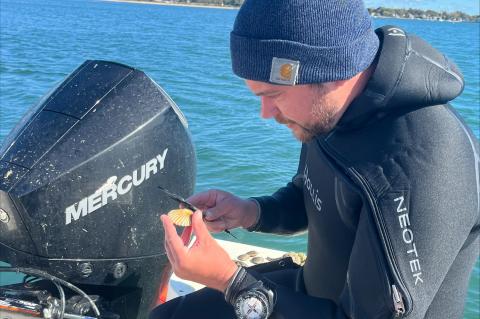 On the Water: Searching for Scallops
On the Water: Searching for ScallopsA trip in search of bay scallops with Harrison Tobi, an aquaculture specialist with the Cornell Cooperative Extension marine center in Southold, to examine the productivity, survivability, and density of the population both in the wild, and also those raised in plastic cages that were spawned at the center.
 On the Water: A Step Back in Time
On the Water: A Step Back in TimeThe season for blackfish opened Friday for those who fish in Long Island Sound. Like calamari? Then head to Montauk. The night bite has been pretty consistent of late.
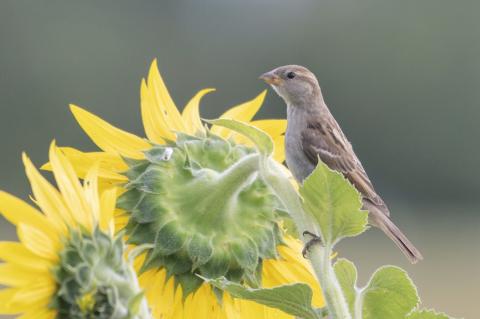 On the Wing: Love, Hate, and House Sparrows
On the Wing: Love, Hate, and House SparrowsOn the East End, we hear a lot about invasive species in the plant world, but the house sparrow was one of the original invasive species. House sparrows are bullies. They fight over dirt baths. They are nonmigratory, colonize habitat, and then profusely breed. When native migratory birds return to nest in the spring, these pugnacious birds force them away.
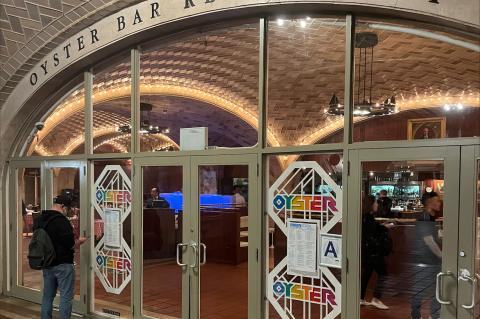 On the Water: Rather Be Fishing
On the Water: Rather Be FishingLooking at my log book, I’ve only fished three times on her this year. That’s pretty pathetic. I made about a dozen runs to check on the lobster traps, but I can’t recall fishing so little in my life.
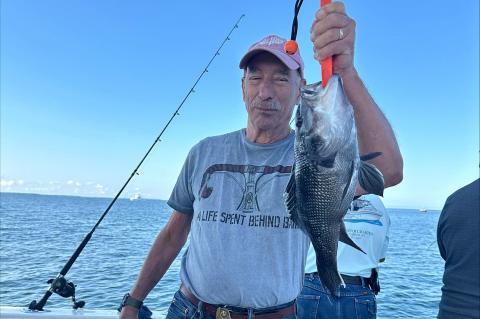 On the Water: Hooked on ‘Jaws’
On the Water: Hooked on ‘Jaws’I’ve probably seen “Jaws” a hundred times, including when it made its debut on the big screen at the East Hampton Cinema on June 20, 1975. I know the entire script word for word.
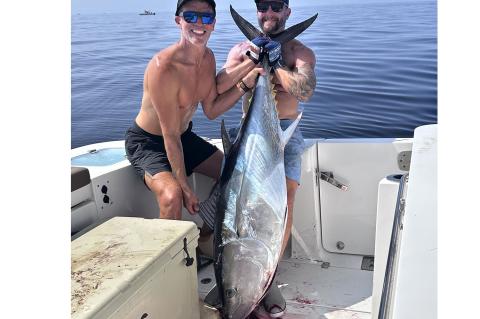 On the Water: All the Signs
On the Water: All the SignsAs we have now formally settled into fall, the changes on the fishing scene have commenced, as have the changes in weather.
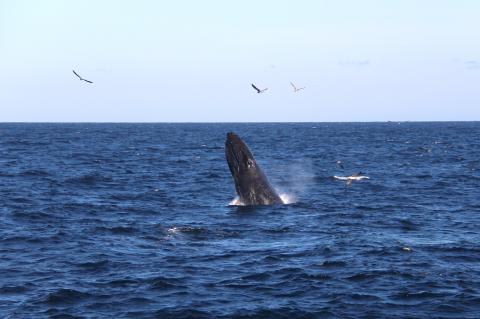 On the Water: A Whale of a Show
On the Water: A Whale of a ShowThere's been plenty of whale action visible from the beaches, and it's been a stellar week for inshore and offshore fishing, with fluke, striped bass, porgy galore, and tuna farther out.
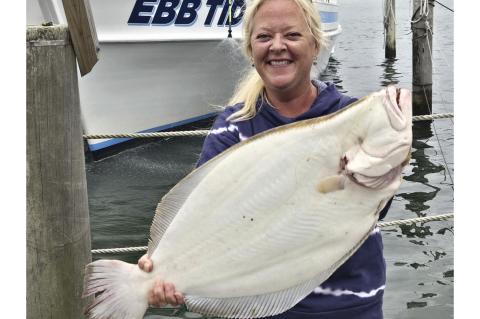 On the Water: Gilligan’s Lobster
On the Water: Gilligan’s LobsterI had a nice chuckle watching an episode of “Gilligan’s Island” in which Gilligan, in his inevitable white bucket hat, hauled in a lobster trap from the overly warm, tropical lagoon (a stage studio out in Los Angeles).
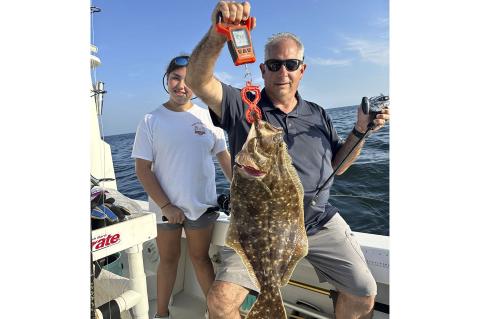 On the Water: Turning the Page
On the Water: Turning the PageThis was a weird summer. We witnessed it all, from epic rainfall to sustained heat waves to jungle-like humidity. On the fishing scene, anglers are looking forward to the change of seasons.
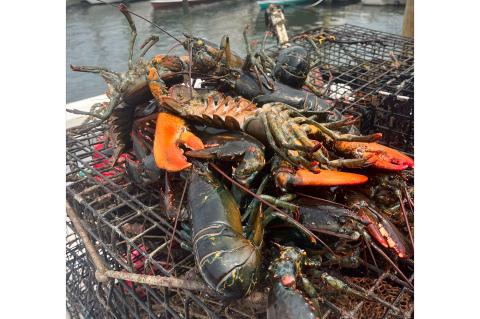 On the Water: Last Call for Lobsters
On the Water: Last Call for LobstersI was surprised to see in my logbook that my lobster catch was better than expected this year, although lobsters in our local waters have been on a downswing for decades.
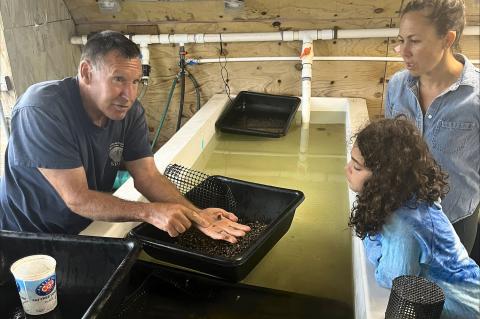 On the Water: The Oyster King
On the Water: The Oyster KingA trip to the North Fork to pick up 1,000 oyster spat from the Cornell Cooperative Extension Marine Center means it was time to replenish my North Haven stock.
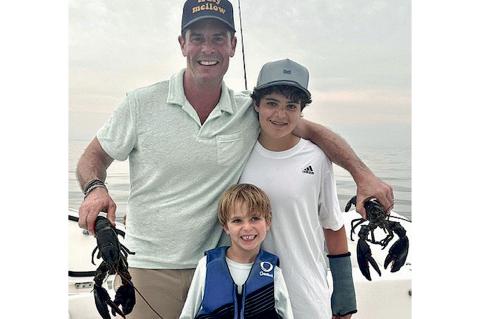 On the Water: Rough Day on the Boat
On the Water: Rough Day on the BoatAt daybreak, I went to check my lobster traps off to the east, but before we ventured forth, I wanted to do a bit of fishing on the east side of Gardiner's Island. Fluke and sea bass were the intended quarry. My expectations were very low. Let me explain.
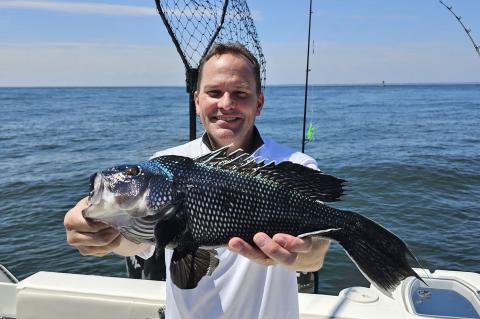 On the Water: A Hearty Response
On the Water: A Hearty ResponseAfter finishing dinner on our outdoor patio overlooking Shelter Island Sound the other day, we noticed a canoe with a man, woman, and child in it moving rapidly on the strong incoming full-moon tide. It was getting dark and they were too far from the beach.
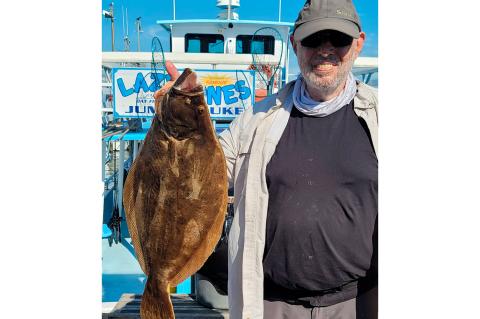 On the Water: In the Saddle Too Soon
On the Water: In the Saddle Too SoonWe are in full-scale summer mode as August approaches. In Montauk stripers are still running, and the same is true for fluke and a plethora of undersize sea bass.
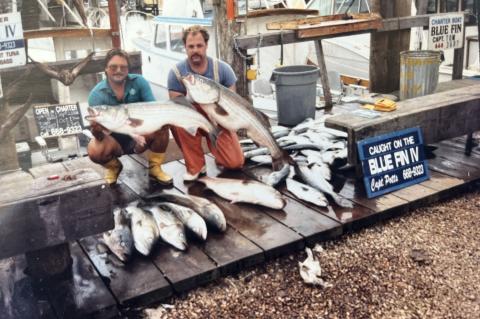 Michael Potts: Montauk Fishing Legend of the Year
Michael Potts: Montauk Fishing Legend of the YearIt’s appropriate that Michael Potts will be honored on Sunday afternoon as the Montauk Fishing Legend of the Year at the Montauk Grand Slam fishing tournament that Henry Uihlein has hosted at his marina for nearly three decades.
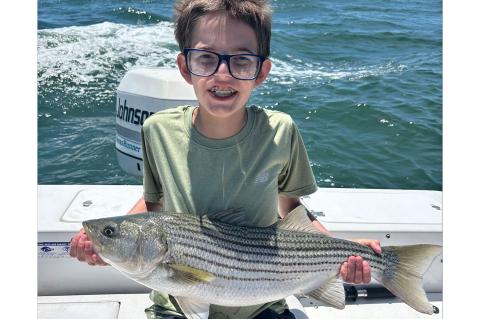 On the Water: Crab King and Big Stripers
On the Water: Crab King and Big StripersI trapped 15 lobsters on July 8. That was the good news. The bad was that the Yanmar diesel engine on my Rock Water encountered problems on the return trip to Sag Harbor.
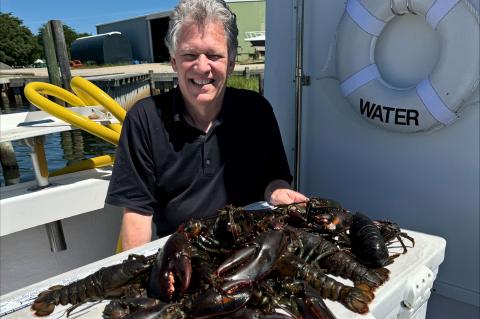 On the Water: A New Apprentice
On the Water: A New ApprenticeMy good friend Robert Cugini, who hails from Seattle, has served as a valued deckhand for many years when bay scallop season opens in early November. But lobsters are a different ballgame.
 On the Water: Fish Aplenty, Egos Too
On the Water: Fish Aplenty, Egos Too I know that the East End is a well-known hot spot. I realize that nothing stays the same, but I miss the more simple days when courtesy, respect, and kindness ruled the road and water. Is it too much to ask for today?
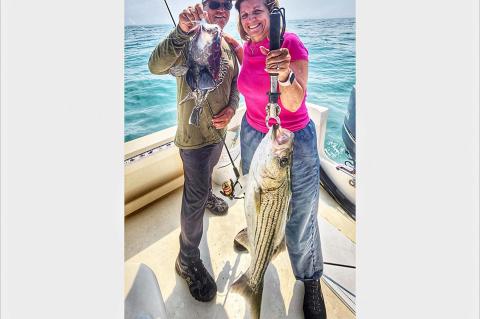 On the Water: Heat on the Water
On the Water: Heat on the WaterThe recent heat wave zapped my energy for getting on the Rock Water and wetting a fishing line. But I sucked it up and checked on my lobster traps anyway.
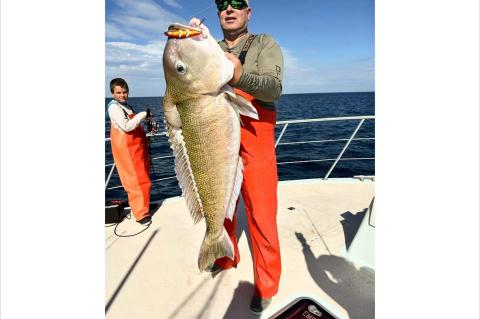 On the Water: A Tow Back Home
On the Water: A Tow Back HomeAfter a good catch of bluefish, I steered back to port in Sag Harbor, but my engine stalled out a few minutes later. Not good.
 On the Water: Be Kind to Sharks (and Giant Crabs)
On the Water: Be Kind to Sharks (and Giant Crabs)The D.E.C. has announced changes to recreational fishing regulations to improve management of protected shark species. Plus, a record blue-claw crab hits the counter at Tight Lines Tackle.
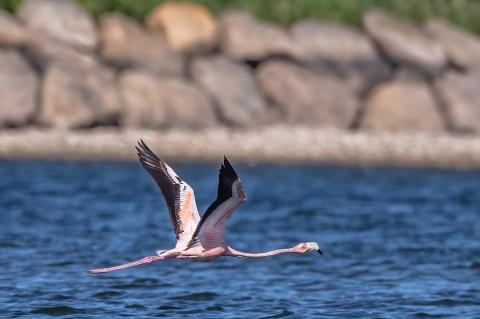 Georgica Flamingo Has Flown Onward
Georgica Flamingo Has Flown Onward“It’s the first in a very long time” to visit New York State, “if not the first ever,” said Shai Mitra, an assistant professor at the College of Staten Island, said of the American flamingo that visited Georgica Pond in East Hampton last week. The bird was last seen there Saturday at dusk.
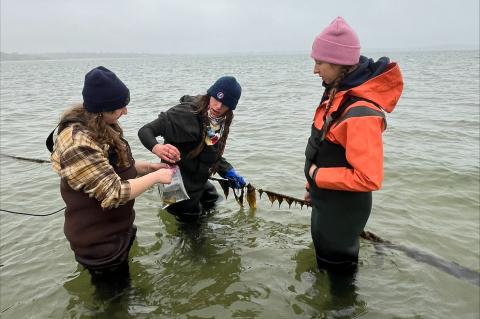 On the Water: Help for Kelp
On the Water: Help for KelpIn local waters there has been a decrease of kelp, much of which was typically found from the east side of Gardiner’s Island all the way to Montauk. A new project looks to change this.

